ABSTRACT
The aim of the project is to explore sustainable design opportunities from the tropical climate of Bali. Using advanced environmental analysis tools to understand the local climate and create comfortable indoor and outdoor space that integrates passive design, harvest renewable energy from the environment and decrease the reliance on energy produced by fossil fuel.
Being located near the equator, Ubud has a warm, tropical climate with year round temperatures averaging 27 degrees Celsius with a humidity level of about 85-90%. There are two seasons in Bali. The dry season between the months of May-September and the wet season between the months of October to April.

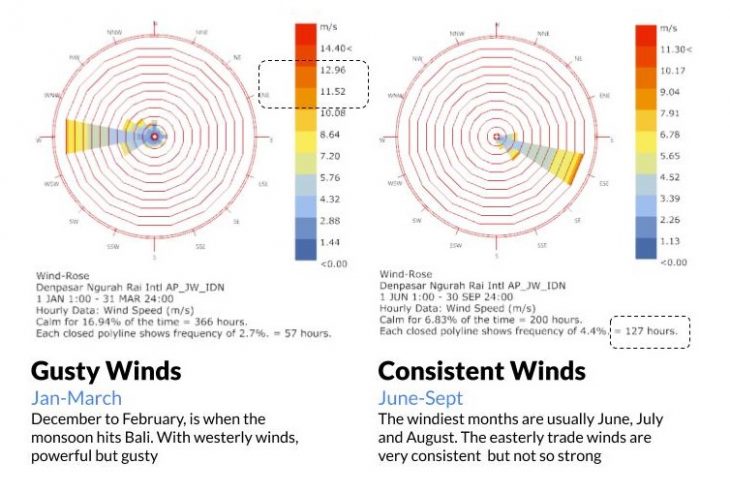
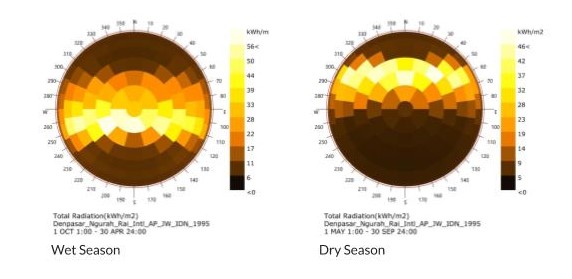
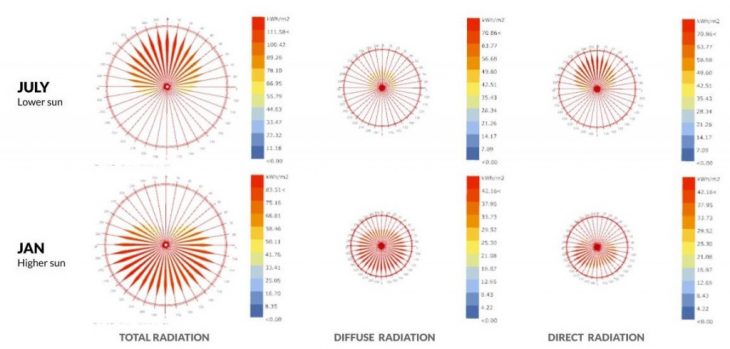
The vertical angle of the sun does not change much between the wet and dry months. As we see here the sun is mostly overhead all year round making it ideal for solar energy harvesting. Between January – March, winds coming from the west are powerful and gusty. Whereas in the months between June – September the winds flowing from the east are very consistent but not strong. Hence, this is also the kite flying season in Bali.
- There is high solar radiation all year round so proper shading should be provided
- Monsoon season is extremely high in humidity which creates discomfort especially when temperature is also high
- There is a good amount of wind all year so it should be utilized for natural ventilation and stack effect
RESEARCH QUESTION
Can we create opportunities from the climate by harvesting energy from the environment while decreasing the reliance on energy produced by fossil fuel and at the same time create indoor and outdoor space that is comfortable.
OBJECTIVES & METHODS
- Self Shading the building to reduce heat inside the building
- Create Openings to allow cross ventilation
- Determine how much solar energy can be harvested
- Creating comfortable outdoor spaces sheltering from rain, wind and sun
OPTIMIZING THE SKIN
Starting with a primitive geometry, we ran a solar radiation analysis to test forms that are suitable for maximum solar radiation and can also self shade by the use of cantilevers.
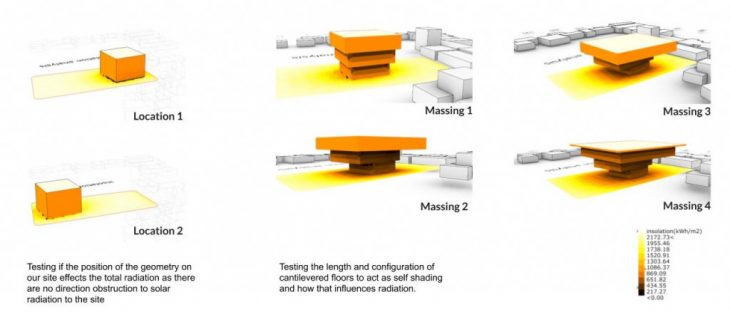
This initial geometry was then fed into a generative solver, Wallacei X, to achieve an optimized form that maximizes solar shading while at the same time maximizing solar radiation within a constraint volume. The different forms were then tested for total surface radiation and compared. Because it is a local material and it has low embodied energy, bamboo was chosen as the material of construction. Taking that into considerations, the form was adjusted to be suitable for bamboo construction.
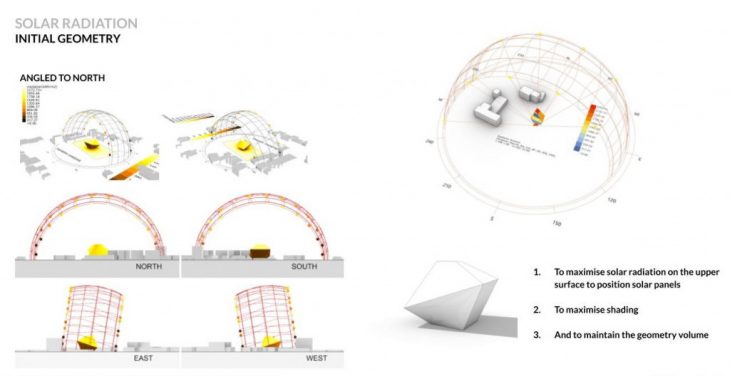
TESTING DIFFERENT MASSING SURFACES
-
Can we optimize the mass for solar radiation without compromising the bamboo related design?
-
How much energy can that provide to the building?
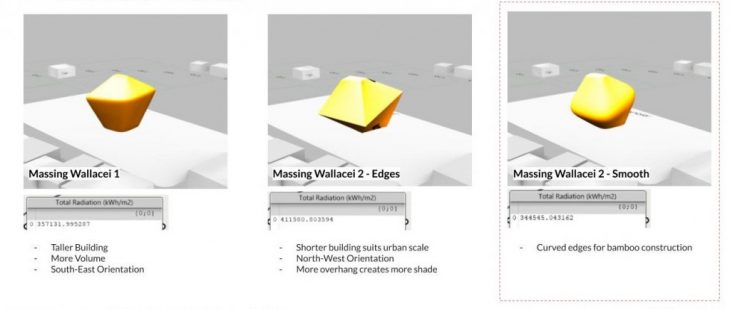 Looking at the building surface to address the different objectives, the areas where there are high solar radiation are optimized for solar energy harvesting via strategic positioning of solar panel, while the areas with low radiation are optimized for cross ventilation by creating openings and operable louvers. Some areas of the skin that could be further optimized for receiving solar radiation is rotated and analysed for improvements.
Looking at the building surface to address the different objectives, the areas where there are high solar radiation are optimized for solar energy harvesting via strategic positioning of solar panel, while the areas with low radiation are optimized for cross ventilation by creating openings and operable louvers. Some areas of the skin that could be further optimized for receiving solar radiation is rotated and analysed for improvements.
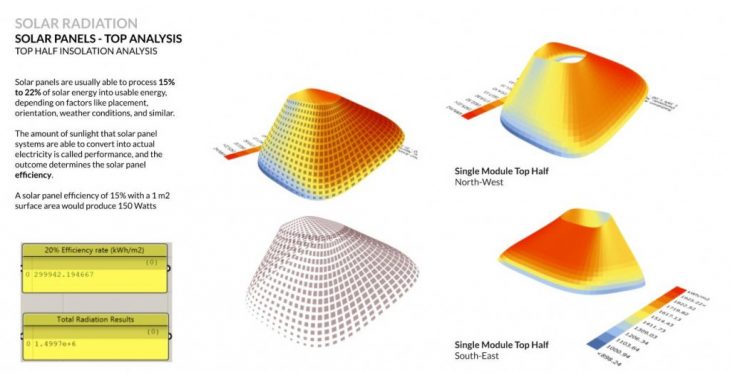
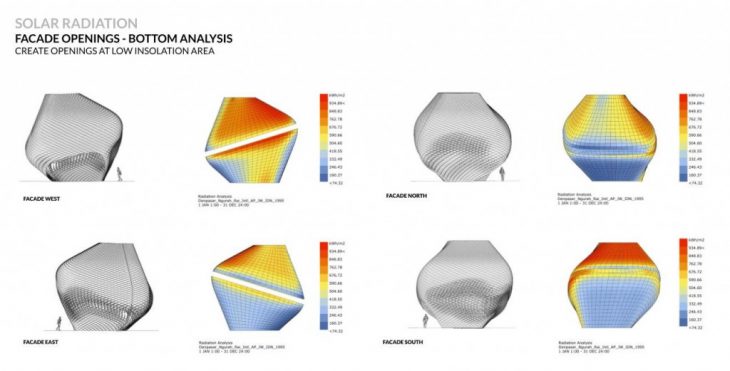
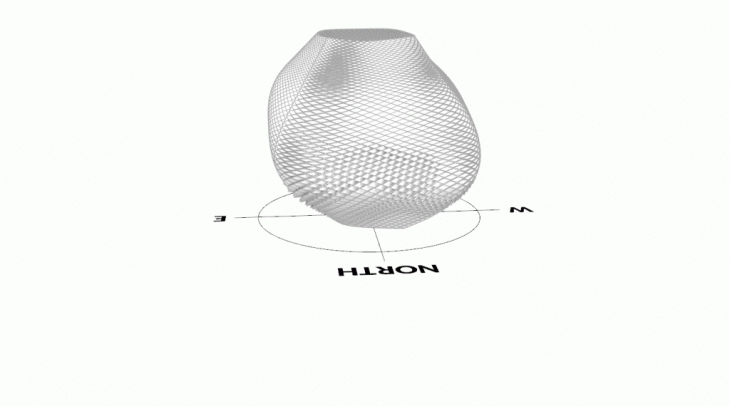
The final result is a building surface that rotates to achieve efficiency for the solar panels and to allow for cross ventilation.
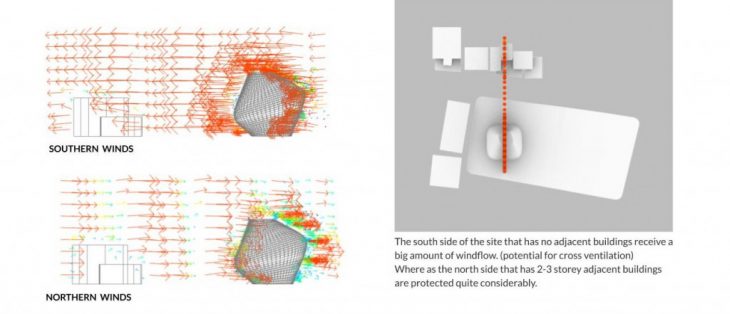
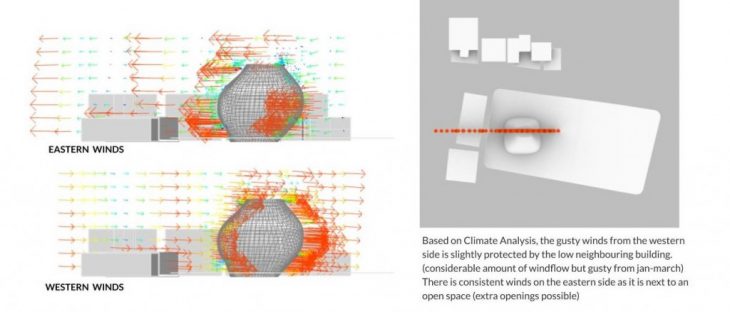
COURTYARD COMFORT
Thermal comfort analysis was done to determine a comfortable courtyard between the 3 building modules on site. Based on the Solar Adjusted Temperature(MRT) study that shows the courtyard spaces would be too hot during most of the day, a shading strategy using landscape and plants was created to ensure the comfort of the outdoor courtyard.
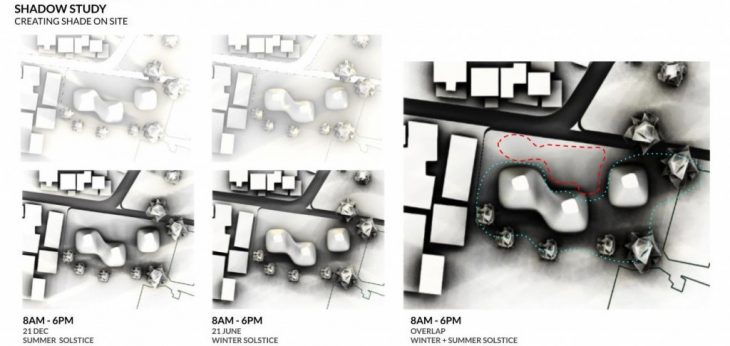
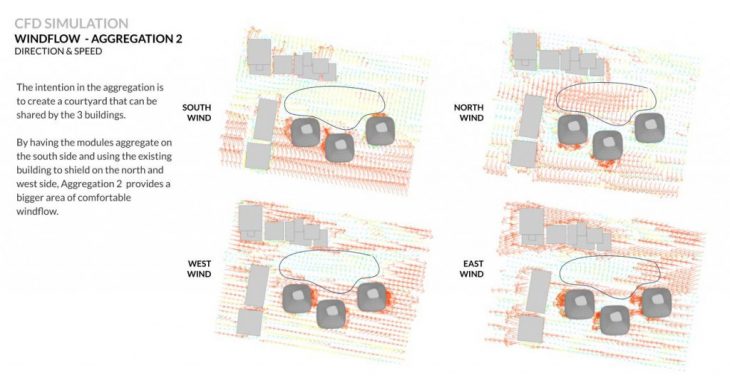
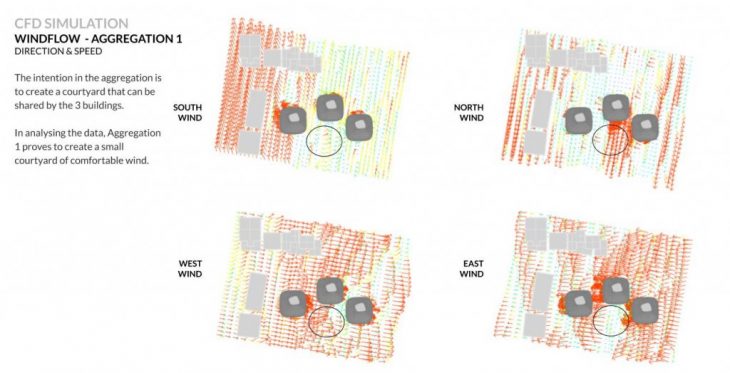
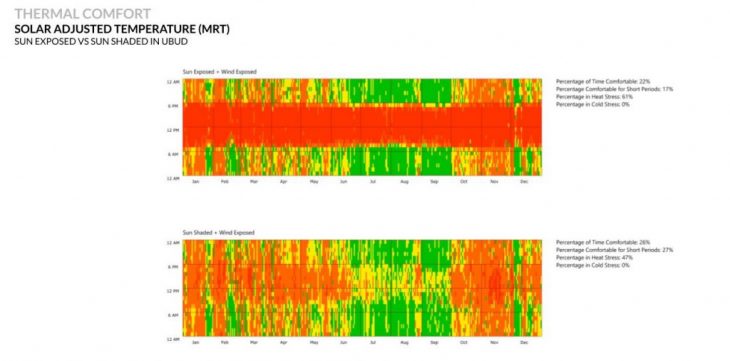
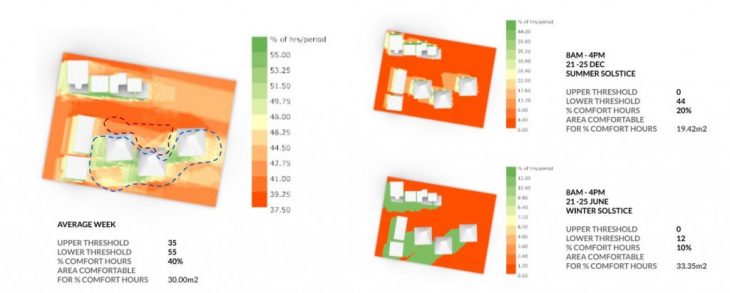
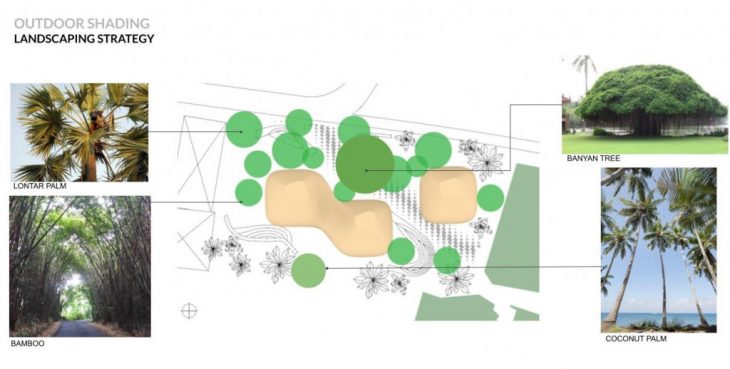
Sun Salutations : Deriving design from the environment is a project of IAAC, Institute for Advanced Architecture of Catalonia developed in the Master in Advanced Computation for Architecture & Design 2020/21 by students: Marissa Ridzuan, Amar Gurung, and Pedro Ribeiro, and faculty: Angelos Chronis, Sarah Mokhtar and Aris Vartholomaios
